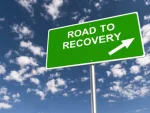Content
To avoid relapse, it is important to understand the risk factors and causes that typically lead to relapse. Understanding these risk factors will help you to avoid the potential risk of relapse during or following recovery. internal trigger examples A woman in alcohol addiction recovery wakes up feeling tired and worn-down one morning. Upon arriving at work, she’s told that her company is going to lay her and a handful of other workers off at the end of the month.
If one of our articles is marked with a ‘reviewed for accuracy and expertise’ badge, it indicates that one or more members of our team of doctors and clinicians have reviewed the article further to ensure accuracy. This is part of our ongoing commitment to ensure FHE Health is trusted as a leader in mental health and addiction care. Objects like syringes, wine glasses, pill bottles, or pipes may be difficult for you to look at. These objects may remind you of your previous use and can cause you to linger on thoughts of using drugs or alcohol with old buddies or alone at your home.
How Facing Your Triggers Can Prevent Relapse
By knowing what common addiction triggers exist, you can better manage them and take steps to avoid relapse. If addicted people could simply make the decision to get sober, snap their fingers, and turn their lives around, they would. Recovery is not easy and most people require addiction treatment to reclaim their lives once they become addicted to drugs or alcohol. There are two main types of triggers that can start someone towards the path of relapse. As a person recovers from addiction, they may experience strong desires to return to the substances they have abused in the past. In this blog post, we’ll discuss what a relapse trigger is and identify the different types of triggers.
What are external change triggers?
External triggers are environmental jolts that occur external of the organizations. They refer to changes in various dimensions in the environment that require organizations to change existing routines and rules.
Relapse prevention programs can be offered during and after addiction treatment. Additionally, feeling connected and supported gives individuals access to resources such as treatment programs or support group activities that can help them avoid addictive behaviors. For those living in remote areas, numerous online recovery communities are available for individuals to access the necessary social support they need. When combined, mindfulness and meditation can help individuals gain greater awareness of their thoughts, feelings, and behavior patterns, allowing them to address addiction triggers more effectively.
Best practices for designing for Internal Triggers
Learn to recognize physical signs of reacting to a trigger, such as changes in your breathing, so that you can employ strategies to calm yourself and shift your emotional state. Whether trigger warnings are helpful or harmful is a subject of debate. Some use trigger warnings to give students time to physically https://ecosoberhouse.com/ or mentally prepare for potentially distressing subject matter, such as physical or sexual violence. Trigger warnings are used in other settings, too, such as in the media. What may be a normal, everyday situation or minor inconvenience for some may be triggering to someone living with mental illness.

However, after 6 months, only half the patients in the taper alone group were able to stay BZ-free, compared with all the patients who received the CBT program. For example, Mystkowski and colleagues (2003) demonstrated the relevance of shifts in internal context during treatment for fear of spiders. The researchers manipulated patients’ internal states by giving them either caffeine or placebo while providing CBT with exposure to spiders. Exposure treatment was effective, and no difference between patient groups was evident immediately after treatment. We’re united by our commitment to providing effective, relevant, and innovative mental health support at all stages of your journey.
How to Cope With Triggers
In the recovery world, a trigger is a sensory experience that can lead someone to misuse substances. When people feel triggered, it is often because they are reminded of something that is difficult to deal with on an emotional or physical level. This topic is especially important to recovery, as trauma and mental health struggles can be found at the root of many peoples’ substance use disorder.

Bartenders who become addicted need to find another profession, as bars are notorious places for both alcoholism and drug addiction. If you work in a drug-infested environment, such as a restaurant or with others who addict, your chances of recovery fall to close to zero. While some triggers may create a nearly-unavoidable craving, in many situations the trigger can be removed or escaped with enough time to stop potential use. At Park Mental Health Treatment our San Diego mental health treatment services allow our clients to work closely with our medical professionals to create a customized treatment plan that works around you.
Once the patient gets into the mood, he or she and the clinician identify and challenge high-risk thoughts (e.g., “I can’t stand this feeling!”). The clinician asks the patient to note the feeling without doing anything to manage it. Finally, the clinician and the patient work together to select adaptive alternative behaviors to drug abuse, and the patient rehearses them in the presence of the cues. First, we want to encourage clinicians to consider the role of situational cues when planning treatment, and help patients prepare for and become resilient to situations in which they may confront cues for relapse. Though commonly used to refer to the experiences of people with post-traumatic stress disorder (PTSD), the term “trigger” can also be used in the context of other mental health illnesses. Journaling and self-reflection are essential tools for identifying and managing addiction triggers.
Alcohol and drug addiction triggers are stimuli that remind you of your past drug or alcohol use and encourage those deep cravings. They can be social triggers, environmental triggers or emotional situations. A trigger diary can also help uncover underlying causes of use or cravings, including underlying emotions and environmental events that may lead to substance abuse.
Or it could be the inability to control a feeling of intense fear around fire, after suffering trauma from a house fire. Seeking support from friends and family can also be helpful in managing substance abuse triggers. It is important to have a support system in place that can provide encouragement and accountability during recovery.
- We want to ensure you are prepared and comfortable throughout your treatment experience at Psyclarity Health.
- The majority of individuals who suffer from mental health issues will experience mild to moderate symptoms and conditions which can take the form of depression or anxiety issues.
After treatment, relapse prevention programs are typically offered as ongoing support to help individuals maintain their recovery. This can include ongoing therapy, support groups, or participation in a 12-step program. Developing strong coping skills such as relaxation techniques and mindfulness can also help reduce stress while gradually reintroducing positive self-care activities will help bring balance and joy into our lives.
Managing External Triggers
If you or a loved one has experienced a relapse, or are just considering treatment options, we are here to help you. The Recovery Village has a strong record of helping people with substance use disorders to achieve recovery. Reach out to one of our understanding team members today to learn how you can start on your path to recovery. The solution to managing difficult situations is learning how to confront them without drugs and alcohol.


